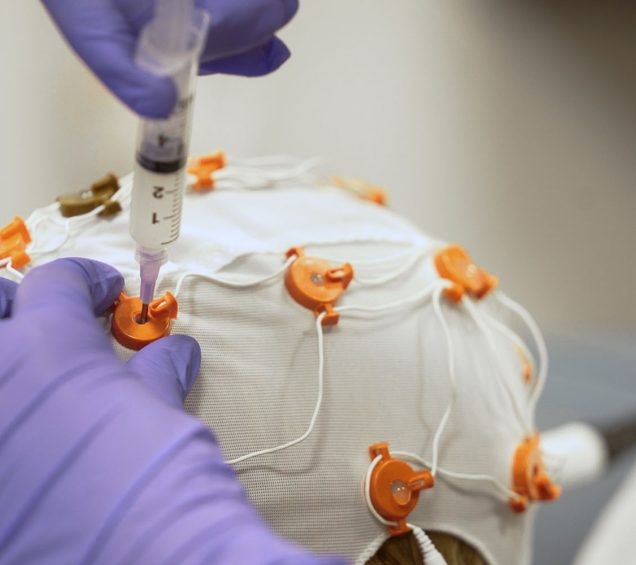Therapies to Heal the Brain and Treat Addiction
It is becoming increasingly clear that understanding the physical changes in the brain in substance use disorder (SUD) and in behavioral health issues such as anxiety, depression and posttraumatic stress is equally as important as addressing the psychological aspects. The target organ in addiction and mental illness, as I wrote before, is the brain. Modern medical science is giving us tools to see how the brain is being affected by SUD and mental illness, allowing us at Caron to perform an integrated assessment on a patient’s brain health, which informs an individualized treatment plan. In this post, I want to explore many of the therapies we use with patients to help heal their brain and support their recovery from SUD.
Everything begins with the assessment, performed when a patient in our Neurocognitive Assessment program first arrives at Caron. This gives us a baseline and helps us understand potential problem areas. No one single test is diagnostic, but together they give us an integrated view of potential problems from many perspectives. The patient may present outwardly as calm and collected, for example, but the blood perfusion and oxygenation studies may show activity in parts of the brain connected with trauma and anxiety.
Individualized treatment
The assessment informs a prescriptive treatment plan, individualized to the patient, targeting specific areas of the brain that need help. Some of the therapies include neurofeedback, Alpha-stim, brain training, heart rate variability (HRV), hyperbaric oxygen therapy, CBT/CPT/DBT, mindfulness meditation, Eye Movement Desensitization and Reprocessing (EMDR), safe and sound protocol, and Transcranial Magnetic Stimulation (TMS). These happen alongside more traditional treatment methods to support the patient and provide a more complete recovery from SUD and other mental health challenges.
We’ve been taking this approach at Caron for many years, supplementing more traditional psychological SUD treatment with treatment focusing on physically healing the brain. Plus, since we test people when they first arrive, again while they are in treatment, and a third time as they leave treatment, we have objective measures on how well this approach can work.
Having quantitative, objective data on brain health helps patients better understand how treatment can help them. Many patients are initially resistant to treatment when they first come to Caron, but being able to show them objective data from the assessments can open their eyes to how desperately they need help. The RBANS cognitive proficiency results are just the beginning. Blood perfusion studies from the FDG pet and the neuro-map can demonstrate in full color how their SUD is physically impacting their brain.
Patients often approach treatment with a lot of shame and guilt. But when you show them the science behind how their SUD has remapped their brain, then you're able to help them understand what's wrong and they can begin to move forward.
Neurofeedback therapy builds healthier pathways in the brain
While treatments such as hyperbaric therapy can help heal the physical injuries to the brain caused by SUD, we also work on helping patients build healthier thought patterns through an extensive program of neurofeedback therapy. With this, we can work to change the connections within the brain. The best way I have to explain this to patients is to imagine two houses right next to each other, but they don’t have a path connecting them. Walking from one house to another through the long grass and the bushes is difficult the first few times, but with repetition a pathway gets worn between the two, and it becomes easier to get from one house to another.
That's what we're doing with neurofeedback, building new connections in the brain so that a person’s thoughts no longer trigger anxiety, depression, PTSD, or any number of other mental issues.
Treating the whole patient
While the focus of our work is Restorative Brain Health, we're really taking care of the whole patient. Everything we’ve ever experienced in our lives, every memory, has been laid down in the brain electrochemically. And each of those memories is associated with a hormone that's released throughout the body when that memory is cued. AA talks about that: People, places and things. It’s referring to the electrochemical triggers in the brain that associate with a person’s memory of those people, places and things. If a person has a memory of some adverse childhood event, then when that memory is cued, the brain is going to flood the body with a neurohormone that causes a feeling of dread, fear and anxiety. Coupling the science of what we know about the brain with all the principles of 12-step recovery can help patients overcome the guilt and shame of the disease of addiction and begin their journey to a life in recovery.
Take the next step:
Start with an online form
-
Caron in Pennsylvania
1-800-854-6023 -
Caron in Florida
1-800-221-6500 -
Breakthrough at Caron
1-800-213-7834




